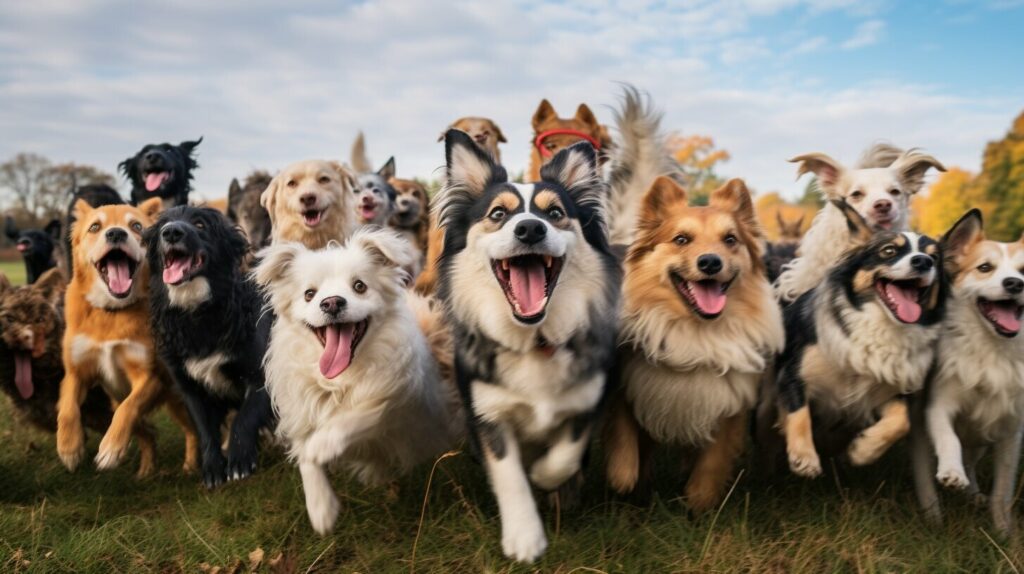If you’re a dog owner, you know that effective communication and training are key to a happy and obedient pet. One tool that can help you achieve this is whistling sounds. Dogs have an acute sense of hearing and can respond well to specific frequencies of whistles. In this article, we will explore the benefits of using whistles for dog training and communication.
By mastering dog whistling techniques, you can improve communication with your pet and enhance their obedience. From whistle commands to whistle recall, there are several ways to teach your dog to respond to whistles. We’ll cover practical tips and techniques for incorporating whistling sounds into your daily routine with your furry friend.
Key Takeaways:
- Whistling sounds can be an effective tool for dog training and communication.
- Dogs have an acute sense of hearing and can respond well to specific frequencies of whistles.
- Dog whistling techniques include whistle commands, recall, and incorporating whistles into everyday life with your pet.
The Science Behind Whistling Sounds
Have you ever wondered why whistling sounds can be effective for communicating with your dog? It all comes down to their acute hearing abilities and how they perceive sound.
Dogs’ ears are designed to capture sound frequencies that are beyond the range of human hearing. They can hear sounds up to 65,000 Hz, while humans can only hear up to 20,000 Hz. This means that dogs are able to pick up high-pitched sounds, such as whistling, more easily than humans.
When it comes to using whistling sounds for dog training, the key is to choose a specific frequency that captures their attention. Whistles are available in a range of frequencies, from 16,000 Hz to 55,000 Hz. Higher frequencies are generally more effective at capturing a dog’s attention, but it’s important to choose a frequency that works best for your individual dog.
Another factor to consider is the consistency of the sound. Unlike verbal commands, whistling sounds are consistent and always sound the same. This consistency can help eliminate confusion and make it easier for your dog to understand the intended command.
Overall, understanding the science behind whistling sounds is key to effectively incorporating them into your dog training routine. By choosing the right frequency and maintaining consistency, you can use whistles to effectively communicate with your furry friend.
Teaching Dogs to Respond to Whistles
If you’re interested in training your dog using whistles, it’s essential to start with the basics. Before you can teach specific commands using whistles, you need to ensure that your dog understands and responds to the sound of the whistle itself. Here’s how to start:
- Choose the Right Whistle
First, you’ll need to choose a whistle that suits your needs. There are different types of whistles available, including pea whistles, silent whistles, and electronic whistles. Find one that you’re comfortable with, and that your dog can hear easily. - Introduce the Whistle
Once you have your whistle, start by introducing it to your dog. Blow the whistle while your dog is nearby and look for a response. If your dog does not respond, try increasing the volume slightly. - Associate the Whistle with a Positive Reinforcement
Now that your dog is familiar with the sound of the whistle, it’s time to start associating it with a positive reinforcement. Each time you blow the whistle, provide a treat or praise your dog. This helps your dog understand that the whistle is a cue for positive things to come. - Gradually Increase Responsiveness
Over time, you can gradually increase how responsive your dog is to the whistle. Start by blowing the whistle at different times and in different locations, rewarding your dog each time they respond. Eventually, you can start using specific whistle patterns and tones to teach commands and reinforce good behavior. - Patience and Consistency are Key
Teaching your dog to respond to whistles takes patience and consistency. It’s important to practice regularly and to use positive reinforcement consistently. With time and effort, you can successfully teach your dog to respond to whistles, which can make dog training and communication easier and more effective.
Whistle training for dogs is an effective method that can help improve obedience, recall, and overall communication with your furry friend. By taking the time to train your dog to respond to whistles, you’ll be able to enjoy a closer bond, and a better-behaved dog.
Whistle Commands for Dogs
Using whistles to communicate with dogs can be an effective way to give commands and promote obedience. Whistle commands provide a clear and distinct sound that can cut through background noise and distractions, getting your dog’s attention quickly. Here are some whistle commands you can teach your dog:
| Whistle Pattern | Command |
|---|---|
| One short blast | Sit/Stay |
| Two short blasts | Come/Recall |
| Three short blasts | Heel |
| One long blast | Stop |
| Two long blasts | Go/Release |
When introducing whistle commands, it’s important to use positive reinforcement and repetition. Begin by associating each whistle pattern with the corresponding command and rewarding your dog with treats or praise for responding appropriately. Start in a calm and quiet environment and gradually increase the level of distractions as your dog becomes more familiar with the whistle commands.
Consistency is key when using whistle commands with your dog. Use the same whistle pattern for each command every time and avoid using different patterns or changing the tone. This will help your dog understand and respond to the commands more quickly and effectively.
Remember to be patient and persistent when training your dog with whistle commands. It may take some time for your dog to learn and respond consistently, but with practice and positive reinforcement, you can establish a strong and reliable communication system with your furry friend.
The Benefits of Using Whistling Sounds for Dog Training
If you’re a pet owner looking for an effective and efficient way to train and communicate with your dog, using whistling sounds can be a game-changer. Here are some of the benefits of incorporating whistles into your dog training routine:
Clear and Distinct Sound
Whistles offer a clear and distinct sound that cuts through distractions, providing better focus and response from dogs. This can be especially useful in outdoor settings where there are plenty of distractions like cars, other dogs, and people.
Improved Recall
One of the most significant benefits of whistle training is improved recall. Whistle sounds can be used to grab the attention of your dog and prompt them to come back to you, even if they’re playing or exploring in a wide-open field. Whistle recall can also be a useful tool during emergency situations that require your dog to come back to you immediately.
Enhanced Obedience
Whistle training can also enhance your dog’s overall obedience. The consistent use of whistles during training sessions can help your dog associate specific sounds with certain commands or behaviors, improving their learning outcomes and ultimately making your life as a pet owner that much easier. Additionally, whistle training can help build trust between you and your dog.
Convenient and Portable
Whistles are small and portable, making them convenient for use during outdoor activities, walks, or even in your own backyard. They’re also easy to use and don’t require any special skills or tools. You can carry them in your pocket or attach them to your keyring, making them accessible at all times.
Positive Reinforcement
Like all effective dog training techniques, whistle training relies on positive reinforcement methods. Using whistles in combination with treats, praise, and positive attention can help motivate your dog to listen and learn, making training sessions more enjoyable for both you and your furry friend.
Overall, incorporating whistling sounds into your dog training routine can be a useful and rewarding experience for both you and your pet. With patience, consistency, and positive reinforcement, you can train your dog to respond to specific whistle sounds and commands, improving their obedience and overall behavior.
Effective Dog Whistle Sounds
If you’re considering using whistles as a tool for dog training, you need to have a basic understanding of the different types of whistles available and their effectiveness. Here are some of the most common types of dog whistles:
| Type of Whistle | Advantages | Disadvantages |
|---|---|---|
| Pea Whistles | – Inexpensive – Easy to find at pet stores – Suitable for short-range training |
– May produce inconsistent sound due to pea movement – Not suitable for long-range training |
| Silent Whistles | – Allows you to adjust the pitch of the whistle – Suitable for long-range training – Good for dogs with sensitive ears |
– May be difficult to use properly – Not as loud as other types of whistles |
| Electronic Whistles | – Adjustable pitch and volume – Suitable for long-range training – Easy to use – Consistent sound |
– More expensive than other types of whistles – Needs batteries or charging |
When it comes to choosing the most effective whistle for your dog, it’s important to consider your training needs and preferences. Each type of whistle has its advantages and disadvantages, and what works for one dog may not work for another. It’s always a good idea to try out different types of whistles and see which one works best for you and your dog.
Tip: If you’re having trouble deciding which type of whistle to use, consult with a professional dog trainer for guidance.
Whistle Recall for Dogs
Teaching your dog to come when called is an important aspect of training, and using whistling sounds can make it even more effective. Whistle recall allows you to grab your dog’s attention and bring them back to you, even in distracting environments.
Here are some steps to follow when introducing whistle recall:
- Start by choosing a specific whistle sound that will be used only for recall. This will help your dog associate that particular sound with the behavior you want them to perform.
- Introduce the whistle sound during training sessions, using positive reinforcement to encourage your dog to come to you when they hear it. Reward them with treats, praise, or playtime to reinforce the behavior.
- Gradually increase the distance between you and your dog, and use the whistle sound to call them back to you. Be patient and consistent, rewarding them each time they respond to the whistle.
- Practice whistle recall in different environments, with varying degrees of distraction. This will help your dog learn to focus on the sound of the whistle, no matter what else is happening around them.
It’s important to note that whistle recall should always be associated with positive experiences for your dog. Never use the whistle sound to scold or punish them, as this can create negative associations and undo your training efforts.
With patience and consistency, whistle recall can be a powerful tool for keeping your dog safe and under control in any situation.
Incorporating Whistling Sounds into Everyday Life with Your Dog
Using whistling sounds to communicate with your dog is not only useful for training and commands, but it can be integrated into your daily interactions with your furry friend.
During walks, use a whistle to get your dog’s attention and redirect their focus back to you when they become distracted. Incorporate whistles into playtime by using a specific whistle sound to signal the start or end of a game. You can also use whistles during mealtime to signal to your dog that food is ready or to indicate that you are ending the meal.
Integrating whistles into everyday life requires consistency and positive reinforcement. Always reward your dog when they respond to a whistle command or signal, and stay patient as they learn to associate the sound with a specific behavior.
Conclusion
Congratulations, you are now equipped with the knowledge and tools to effectively train your dog using whistling sounds. By understanding the science behind how dogs perceive and respond to whistles, you can use this knowledge to your advantage in training your furry companion.
Remember, the key to whistle training success is patience, consistency, and positive reinforcement. By following the step-by-step techniques outlined in this guide, you can teach your dog to respond to whistles and establish clear communication using specific whistle commands.
Whistle training offers a range of benefits, including improved focus, better recall, and enhanced obedience. By incorporating whistles into your daily interactions with your dog, you can reinforce positive behavior, build trust, and strengthen the bond between you and your furry friend.
So, whether you are a new pet owner or an experienced trainer, don’t hesitate to try whistle training for dogs. With the right approach and commitment, whistle training can be a fun and rewarding experience for you and your canine companion.
FAQ
Q: What are the benefits of using whistling sounds for dog training?
A: Whistling sounds offer a clear and distinct sound that cuts through distractions, providing better focus and response from dogs. Additionally, whistle training can help build trust, improve recall, and enhance overall obedience.
Q: How do I teach my dog to respond to whistles?
A: Teaching your dog to respond to whistles involves introducing the whistle, associating it with positive rewards, and gradually increasing their responsiveness. It requires patience and consistency in training.
Q: What are some common whistle commands for dogs?
A: Common whistle commands for dogs include recall, sit, stop, go, and more. These commands are conveyed through specific whistle patterns and tones.
Q: What types of dog whistles are available in the market?
A: There are various types of dog whistles available, including pea whistles, silent whistles, and electronic whistles. Each type has its own pros and cons, and the choice depends on your specific training needs.
Q: How can I incorporate whistling sounds into everyday life with my dog?
A: You can incorporate whistling sounds into your daily interactions with your dog by using them during walks, training sessions, playtime, and mealtime routines. Consistency and positive reinforcement are key for successful integration.



